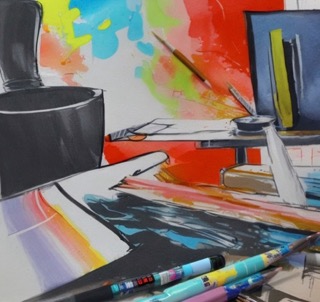Researchers at the Hubrecht Institute have developed an innovative method to grow organoids using a bacterial protein called Invasin, presenting a sustainable and cost-effective alternative to traditional methods.
Researchers from the Organoid group at the Hubrecht Institute have unveiled a groundbreaking method to grow organoids using a bacterial protein named Invasin. This innovative approach, published in the Proceedings of the National Academy of Sciences (PNAS) on Dec. 30, offers a sustainable, cost-effective and animal-free alternative to existing techniques.
Organoids are miniature, lab-grown structures that resemble real human organs. They serve as vital tools for understanding organ function, disease progression and drug testing.
Typically, these organoids need a similar environment to the extracellular matrix found within the body, which is traditionally provided by extracts like Matrigel and BME. However, these extracts, derived from mouse tumors, are not only expensive, but their exact composition remains undefined.
In their quest for a better solution, the research team turned to an unexpected source: a bacterial protein. In particular, they focused on Yersinia bacteria, which utilize a membrane protein named Invasin to latch onto human cells.
“We started to think out of the box and try something completely different,” first author Joost Wijnakker, a doctoral candidate at the Hubrecht Institute, said in a news release.
The researchers isolated and refined a segment of the Invasin protein and discovered its potential to replicate the supportive functions of Matrigel/BME proteins. They coated culture dishes with this refined protein, allowing them to successfully culture organoids.
The versatility of Invasin proved remarkable.
“We were able to grow and maintain organoids long term from human intestinal and airway cells, mouse intestinal cells and even snake venom gland cells,” Wijnakker added.
These cells retained their ability to develop into specialized cell types, mimicking the variety found in the original organ. This capability is crucial for accurately studying organ development, regeneration and drug responses.
Moreover, using Invasin enabled the cultivation of organoids as flat 2D sheets, compared to the traditional 3D structures embedded in gels like Matrigel/BME. This 2D structure offers several advantages, making cells easier to culture and examine, and facilitating more practical drug testing. Additionally, it preserves the natural organization of cells, maintaining the distinct separation of the cell’s top and bottom, which is essential for simulating real organ behavior.
Wijnakker asserts the broad implications of this breakthrough, adding: “We believe that Invasin represents a fully defined, cheap, versatile and animal-free alternative to Matrigel/BME.”
This technological advancement opens up new possibilities for medical research and drug development, signifying a major shift in how lab-grown tissues can be cultivated sustainably and affordably.
The research, conducted at the Hubrecht Institute, an affiliated institute of the Royal Netherlands Academy of Arts and Sciences, marks a significant milestone. It underscores the potential of even the smallest organisms, like bacteria, to initiate profound changes in medical science.

